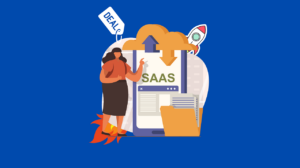Every business, in some capacity, has been impacted by the COVID-19 pandemic. Sometimes, this is a complete halt to operations, like much of the hospitality/tourism industry is currently going through. In other cases, a massive shift in workflow has been required, like greater/complete amounts of remote work.
However, as periods of lockdown grow longer and longer, companies need to start looking forward, namely, in regard to how they are going to get the financing they need through the pandemic and in a very different world after it subsides. Here’s a closer look at what you can expect regarding business financing and how it has changed.
The Post-COVID Landscape
An important point to keep in mind is that, up until this point, we were experiencing several years of a strong global economy. The end result was that lenders have become a lot looser when it comes to credit standards. This meant that businesses that don’t have a particularly strong line of credit or startups run by people with weaker credit history may have still been able to secure some form of funding. There may have been higher interest rates or other restrictions, but they were still able to get something.
Things are already starting to change. Many business experts are not just talking about existing spending changes, but changes in spending patterns in the future. Even when the pandemic subsides, you’re still going to have a large sector of the consumer populace that has gone through their savings/lost work and won’t be able to contribute for some time. Another factor may be that certain businesses that are reliant on large gatherings or international travel still see limited engagement as the public stay wary. These changes in spending patterns will likely make it more difficult for businesses to keep in step with their existing payments. In turn, this leads to higher amounts of delinquency and default rates.
What does this mean for lenders? Safety, in terms of investment may take precedence over yield, which impacts businesses looking for financing. Again, we need to compare behavior in good economic times versus more volatile ones. In ideal settings, a lot of lenders will function in an “application-only” style. In these situations, they don’t need to supply bank statements or additional financial documents for approval. However, as the credit markets begin to get tighter, they become more discerning.
It suddenly is a lot more important to see if businesses have the liquidity to make payments on equipment and other loans, as it’s more likely that they don’t.
What you can expect as time progresses is lenders demanding greater yields to respond to the higher-risk economic environment. So, even if you have a decent credit history, you may have to pay higher payments or interest rates to get any sort of lending. This requires professional support when it comes to finding the ideal lenders for your business needs, whether it’s general financing or something more specific like equipment loans.
What Can You Do?
So, with this in mind, what’s your next course of action? If you still plan on going to conventional lenders like banks or credit unions, it’s essential that you start compiling as much paperwork as you can now. These lenders are going to likely have a glut of other small businesses coming to them for help, and are only going to pick the safest bets in terms of getting their money back. Your goal is going to be collecting all the evidence you can to show you fit in that category.
As of right now, the SBA is also offering low-interest disaster loans to provide working capital for small businesses. These are great for an emergency infusion of cash, since (as of this writing) these are available in all 50 states and have a relatively quick turnaround time when you’re approved. Just understand that there are a lot of businesses going through the same process, so getting to the point of approval may be frustrating. In addition, the recent massive stimulus package passed does include more funding for small businesses. There are a variety of different packages available based on your needs and business type, so be sure to do your research on what looks like the best fit.
As a note, when it comes to this type of funding, depending on the nature of your business, you may need to do some long-term planning. You don’t necessarily have the ability to keep going back to the government for these loans. So, you need to put together a plan to approach other lender types as well. In addition, it’s important you take an honest stock of your business and how COVID-19 is affecting operations and profits. A short term loan may not be enough to solve all your problems, especially if you are going through existing financial issues.




